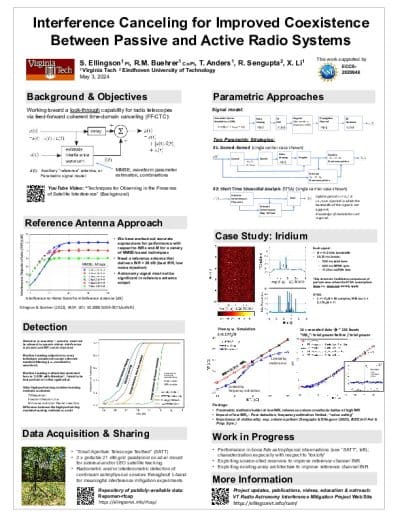Authors
S. Ellingson, R.M. Buehrer, T. Anders, R. Sengupta, X. Li
Abstract
Traditional methods for mitigation of interference in radio science applications rely on avoiding interference where possible, and cutting out afflicted data when not possible. We have been working on the alternative of coherently subtracting ("canceling") interference from radio science data. In principle, canceling can be used to improve sharing of spectrum between active and passive systems. So far in this project we have defined and quantified the performance of two general classes of methods; namely, those in which the interference waveform is obtained using a "reference antenna", and those in which the interference waveform is obtained by estimating the parameters of signal model (and thus not requiring additional antennas or beams). Since a canceler generally should not be used unless interference is actually present, we have simultaneously developed and quantified the performance of plausible detection algorithms. We have studied the use of machine leaning to improve the performance of detection and waveform estimation. Additional outcomes to date include a publicly-available repository of interference waveforms, a YouTube playlist documenting work products, and the involvement of 18 undergraduate students in research and sponsored design projects.

